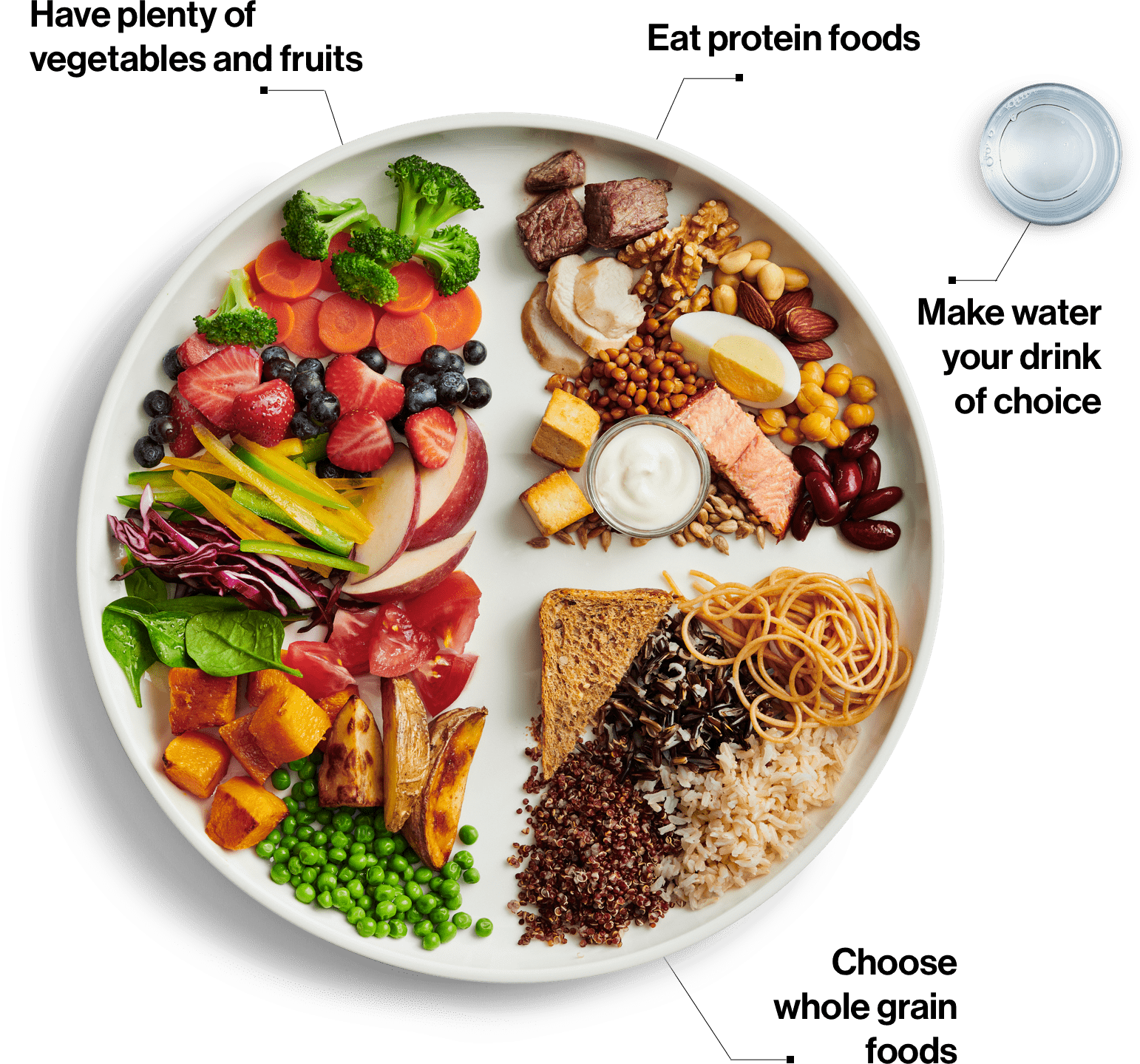Retaining a healthy lifestyle requires an understanding of the significance of proper diet. For general health, a diet rich in all the essential elements and well-balanced. We will examine dietary recommendations, dispel common misconceptions, examine the fundamentals of nutrition, examine the elements of a healthy diet, and talk about the effects of proper nutrition on health in this extensive book.
Knowing the Fundamentals of Nutrition
In addition to giving us energy, a balanced diet keeps our organs and systems operating at peak efficiency. It enhances general well-being, reduces the likelihood of chronic disease, and helps one maintain a healthy weight.
In conversations about nutrition, the phrases macronutrients and micronutrients are commonly employed. Three macronutrients—fats, proteins, and carbohydrates—provide energy in the form of calories. Although the body requires proteins for tissue growth and repair, carbs are the body’s main source of energy. Fats have a negative reputation, but in reality, they are essential for insulation, protecting organs, and facilitating the absorption of several vitamins.On the other hand, micronutrients are vitamins and minerals that are required in lesser amounts yet are crucial for normal physiological functions. Our bodies require trace amounts of chemical substances called vitamins to stay healthy. They are essential for growth, immunity, and metabolism. Conversely, minerals are inorganic compounds that are essential for many body processes, including neuron and bone formation as well as fluid homeostasis.
Although it is frequently disregarded, water is essential to nourishment. It has a role in several body processes, such as metabolism, excretion, digestion, and absorption. It’s critical to drink enough water to support healthy biological processes and general wellbeing. Water facilitates the movement of nutrients and oxygen into cells, controls body temperature, lubricates joints, and eliminates waste.
There are other variables that can affect nutrition in addition to macronutrients and micronutrients. These include dietary requirements specific to each person, social and cultural aspects, and the cost and accessibility of food. It is crucial to take these things into account when choosing a diet, and to get individualized nutrition advice from medical professionals or certified dietitians.
All things considered, knowing the fundamentals of nutrition is critical to making wise decisions regarding our diet and way of life. We may promote our general health and well-being by eating a balanced diet and drinking plenty of water.
Elements of a Healthful Diet
A healthy diet is vital to one’s overall health and wellbeing. It entails eating a diet that is well-balanced and full of all the nutrients the body needs to operate as it should. It’s crucial to comprehend a few essential elements of a healthy diet.
Vital Minerals and Vitamins
Micronutrients including vitamins and minerals are essential for general health and wellbeing. They have a role in several body processes, including immunological response, metabolism, and cell division. We can make sure we’re getting enough of these essential nutrients in our diet by including a range of fruits, vegetables, whole grains, and lean proteins.
For instance, bell peppers, citrus fruits, and strawberries are good sources of vitamin C, which is necessary for healthy immune system operation. For healthy bones, dairy products, leafy greens, and fortified meals are good sources of calcium. Spinach, beans, and red meat all contain iron, which the body needs to transport oxygen.
We can make sure we’re obtaining the vitamins and minerals we need for good health by eating a wide variety of nutrient-rich meals.
The function of fats, proteins, and carbohydrates
The macronutrients lipids, proteins, and carbs give the body energy and perform a number of vital tasks. Tissues are composed of proteins, carbohydrates give us energy, and fats are necessary for the synthesis of hormones and the absorption of nutrients. A balanced diet depends on selecting these macronutrients from wholesome sources.
Lean meats, poultry, fish, eggs, and plant-based foods like beans and tofu are good sources of protein. Foods including entire grains, fruits, vegetables, and legumes contain carbohydrates. Sources of healthy fats include nuts, seeds, avocados, and olive oil.
It is crucial to remember that not all fats, proteins, and carbs are made equal. Reducing the intake of harmful fats can be achieved, for instance, by choosing lean proteins like chicken breast over processed meats. You can get more fiber and minerals by selecting complex carbohydrates, such whole grains, over refined grains. Additionally, choosing unsaturated fats over saturated fats can support heart health.
Making informed decisions about proteins, carbs, and fats can help us make sure our bodies are getting the nourishment they require to perform at their best.
Fiber’s Significance in a Diet
One kind of carbohydrate that the body is unable to digest is dietary fiber. It is essential for preserving intestinal health, avoiding constipation, and lowering the chance of developing chronic illnesses like diabetes and heart disease. For optimal nutrition, we should include foods high in fiber such as fruits, vegetables, whole grains, and legumes in our diet.
Fiber gives food more substance, which encourages regular bowel motions and wards off constipation. It also lessens the rate at which glucose is absorbed, which helps control blood sugar levels. Furthermore, fiber can help lower blood pressure and minimize the risk of heart disease.
Whole wheat bread, oats, brown rice, broccoli, apples, and lentils are a few foods high in fiber. We may boost our intake of fiber and enjoy all of its health advantages by include these foods in our diet.
In summary, a healthy diet entails being aware of and utilizing the several factors that affect general health. We may support our body’s needs and encourage optimal well-being by making sure we get enough of the important vitamins and minerals, selecting wholesome sources of proteins, carbs, and fats, and include foods high in fiber in our diet.






